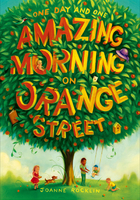Preface
THE GREAT POWER OF SMALL ENTERPRISE
SMALL BUSINESSES, particularly the smallest ones, don't get the recognition and respect they deserve in our mass media-oriented culture, which primarily celebrates and worships as successful the grotesquely big—big size, big numbers, big egos, big kill. An odd reality, when you consider that 80 percent of all businesses in the United States have fewer than five employees.[1] Yet some visionary small-enterprise owners fully embrace the advantages of small size and adopt practices to hone these assets just as a master craftsman develops his or her skills. Such business owners' journeys thus become ones of qualitative depth rather than quantitative expansion.
In a culture that associates success too often with fast-growth, high-revenue, large-scale corporations, how do owners of these underappreciated small enterprises manage the many challenges of creating as well as sustaining their businesses? What inspires them to persevere with their small organizations in a world in which people are branded as unimportant, unambitious, or worse, failures, if they're not obsessed with quickly building a big company, amassing great financial wealth, and becoming the next Bill Gates? What motivates them as they struggle not just to make ends meet but to rise above mediocrity, while bombarded with news of the multimillion-dollar salaries paid to celebrity CEOs, movie stars, and athletes? What helps them keep perspective when they hear of the significant resources extended by banks and governments to help save bankrupt corporations? What makes their preference of small-scale, qualitative entrepreneurship worthwhile? What makes them strive toward greater idealism in their vision and refinement of their business relationships, thus distinguishing themselves from the "pack"?
These and other questions inspired me to write this book as one way of celebrating small enterprise—big-vision small enterprise in particular—and challenging a major assumption: that quantitative growth is the only path to satisfaction and success. I'm happy to report that this assumption is far from true, as this book will help reveal.
In writing Big Vision, Small Business, I wanted to share real-world information about what it's like to be a small-business owner: you'll find stories, anecdotes, profiles, ideas, and insights from actual big-vision small business owners. I also explore some of the options available to the business owner who doesn't wish to be held captive by a narrow, quantitative definition of success, so you won't see many references to a company's revenues and payroll size, nor an owner's net worth. None of those are considered reliable measures of success in this book. Indeed, Big Vision, Small Business emphasizes that growth and success can and should be defined qualitatively, based on, among other things, a small-enterprise owner's vision, values, lifestyle goals, and the quality of his or her relationships and contributions within and beyond the walls of the business. Growth and success become more about the quality of the journey, the lessons learned and applied, and the positive contributions in service to others, rather than a simple, raw dollar amount that means little unless you look beneath the surface.
In addition to suggesting alternatives to the prevailing quantitative definition of growth and success and paying homage to my fellow small-business owners, I hope this book provides validation for those current and prospective entrepreneurs who endeavor to rise above the norm, above the mediocre, above the minimum that is expected, by plumbing the depths of what's possible and bringing their dreams to life in ways that serve, surprise, and lift others up. If Pareto's 80-20 rule applies to small business, big-vision small-business owners are those 20 percent that set new standards and create new ways of working and being. Many people have told me that this big-vision spirit is needed more than ever in our "post-9/11" reality.
I also hope Big Vision serves as a resource in which people will find inspiration: new ways to think about their enterprises and their own journeys as small business owners, a few thought-provoking ideas, and a sense of satisfaction in knowing they're part of a wonderful community of individuals who can and do affect the world for the better. Big Vision might also help foster understanding about the nature and experience of us small-business owners for family members, friends, and employees—those closest to us and most affected by the enterprise and its demands on us.
HOW TO USE THIS BOOK
I've organized Big Vision, Small Business with small-business owners in mind. You can read the book cover to cover, if you're so moved, or you can start with the "Key" that speaks to you most and begin your reading in that section. Either way, the book is designed to serve as a resource you can keep at arm's length for those days when you need an idea, a new perspective, or a little inspiration.
The book is intended to validate, challenge, and expand readers' current knowledge and experience base. In that spirit, I've included chapters that are more conceptual and data oriented and provide a bird's-eye view of small enterprise and its contributions and strengths. Other chapters provide personal anecdotes and insights from my own journey, as well as those of the 70-plus business owners I interviewed. In addition, I've suggested reflection points and questions that you can jot in your notebook for personal reflection or dialogue with others in your group. I haven't dumbed the content down, since I know that readers are smart enough to head for their dictionary or other reference if there's a new term or concept within these pages.
Here's what follows:
Section OneThere's More Than One Way to Define Growth, introduces the concept of qualitative, rather than quantitative, growth. Since you can't leverage small-enterprise attributes if you don't know what they are, it offers a key to what small business is and what contributions small enterprises make to their local communities and the larger economy. It begins to point out the perspectives and practices that distinguish a big-vision small business from the larger category of small business. This section also reviews the advantages and disadvantages of large- versus small-scale enterprise, introduces a way to look at growth as a qualitative issue rather than a solely quantitative one, and shares in-depth profiles of four big-vision small-business owners and their "growth rich" journeys. It also clarifies the importance of making conscious decisions about growth and sets the stage for the next three keys to success, which offer pathways to qualitative growth while helping to strengthen what are traditionally considered small-business advantages.
Section TwoTo Live Large, You Have to Vision Big, brings to life the saying "If you don't know where you're going, any road will do." Big-vision small-business owners create a clear vision of their reason for being in business, and that vision sustains them through flush and tough times alike. This section includes the 12 priorities of big-vision small businesses; reviews definitions of vision, mission, and values as they relate to a big-vision small enterprise; and emphasizes the importance of having a plan to help integrate your vision with the everyday actions of the business. You'll also find an in-depth profile that shows how one big-vision small-business owner relied on clear vision and daily perseverance while navigating intense challenges as she created her enterprise. As with the first section, there are thought-provoking and insight-generating questions, reflection points, and exercises included in the content.
Section ThreeRight Relationship Is a Big-Vision Craft, looks deeply into an area where big-vision small businesses can reign supreme: personalized, thoughtful relationships. More than just a surface-skimming view of customer service or a review of how to find "human capital" or win the "war for talent," this section discusses why and how a big-vision enterprise owner can take communication and relationship building to a higher level, where right relationship is both a distinguishing factor, a means of qualitative growth, and even an avenue for deepening wisdom and personal mastery. Stemming from the Buddhist Eightfold Path, and inspired by other spiritual traditions as well, right relationship challenges us to a higher standard of mindfulness and excellence in our connections with others. While the section focuses on relationships with employees and customers, the tenets can and should be expanded outward to include all stakeholders affected by the organization. Since right relationship is a hands-on discipline, this section offers many tips for practical application from big-vision small-enterprise leaders, as well as high-level concepts and ideals.
Section FourTo Live from the Source, Replenish the Well, explores the ways that what I call wisdom and mastery practices provide inspirational fuel to help guide and sustain a big-vision, small-business owner in running such an enterprise. It includes chapters on wisdom and spirituality in the workplace and delves into several of the common challenge areas that both require and develop wisdom and mastery: money and risk, competition, success and failure, and time management. There is also a chapter of essays or reflections on various practices that a business owner might adopt to foster such concepts.
Finally, the book closes with a few thoughts and suggestions to help you begin to engage more fully with the ideas shared throughout the book.
The anecdotes, stories, lessons, and suggestions contained within these pages come from a variety of sources: my own decade of experience as a business owner, countless informal conversations with business owners over the years, and more formal interviews with small-business owners and advocates from throughout the United States. For the interviews, I contacted small-business organizations, such as Chambers of Commerce and Small Business Development Centers, and asked for referrals to those individuals in their communities who fit the profile of a big-vision small-business owner. I spoke with business owners or organization representatives from nearly every region of the United States and corresponded with colleagues throughout the world.
At the same time, I continued my informal discussions and routine patronage of small businesses in my own neighborhood and city and in areas I've visited during the course of writing this book. The most wonderful thing is how similar most of the people I spoke with found the experience of business ownership and how inspiring it was to talk to a group of people so committed to, in some way, being of service and enriching the lives or experiences of others through the operation of their small businesses.
This book isn't intended to be The Answer. It's not designed to be The Small-Business Gospel, nor a lofty academic tome. It isn't a template for tax preparation or outlining a business plan, since there is plenty of information already available on those topics. While providing ideas, insights, and food for both thought and application, this book is not a replacement for seeking tailored counsel from your attorney, certified public accountant, spiritual counselor, or others from whom you seek guidance on issues specific to you and your business. And none of these are substitutes for your own reflection, intuition, and experience about what's right for your business as it relates to you, your family, your life, and your mission or purpose in the world.
My greatest hope is that Big Vision, Small Business serves as an inspiration to help you, at various junctures in your small-business journey, to assess the options, make a decision that's right for you at that point, and perhaps, adopt a mindset that allows the journey to be fulfilling and energizing rather than draining. I hope it helps you, in these challenging times, find greater meaning and create deepened connections. May you find comfort, insight, and enthusiasm from the wisdom shared by actual small-business owners who have stood at the doorway of possibility opened by a vision only they could see, and have faced and surmounted again and again the day-to-day challenges inherent in manifesting that vision. My hat is off to you for having the courage to undertake the journey, and even more for deciding to make your enterprise extraordinary instead of mediocre. Your community and the world are better for it!
Jamie Walters
San Francisco, 2002
注释:
[1]Portrait of Small Business USA, November 2001 (a study conducted by Bigstep and Working Solo, Inc.).
ACKNOWLEDGMENTS
Image
WRITING A BOOK is a lot like creating a business. Both are more marathons than they are sprints, and both are intensely rewarding and soul-expanding endeavors. And while both seem like solitary efforts, they are often completed thanks to the participation and support of others.
I'm grateful to many people, not the least of whom are my fellow business owners, who, in a spirit of trust and generosity, shared their experiences and insights with me in a host of formal interviews and less formal conversations. I'm also grateful to the many big-vision small-enterprise owners and spiritual leaders whose work and dedication has inspired me along the way. Their wisdom personalizes and enriches these pages, to the benefit of others who will read this book. Many of the people with whom I spoke are not featured specifically by name or company, though the spirit of each is present in the contents of this book.
I've enjoyed working with the dedicated team at Berrett-Koehler—itself a big-vision small business. I particularly appreciate fellow B-K author David Korten's referral and Steven Piersanti's very keen and insightful questions, which challenged me to sharpen my focus and better develop the book's core strengths. To all of the B-K team: it's a genuine pleasure to work with you.
Thanks to Sarah Fenson, my Ivy Sea, Inc., colleague, whose reliability helped me create the time to write both editions of this book; to Karla Toland, who, in addition to reading the manuscript, created the incredible resin piece for the cover art; to Misha Bruk for photographing the cover art; to Shelby Putnam Tupper for designing the jacket; to Claude Whitmyer, Judith Kautz, and Terri Lonier for their time and thought in reviewing the original manuscript; and to Lawrence Ellis, Lylie Fisher, Adam Leonard, Kathleen Epperson, Sara Jane Hope, Jean Ortega, and Jeffrey Kulick for providing thoughtful suggestions for improving the manuscript for the paperback edition.
Special thanks to my sister, Teri Walters, for lending her keen eye in the editing and proof stages; and to my sister Mandi Walters for her encouragement. To my mom and dad: it's always fortifying to know that you're proud of me no matter what I do, so long as I keep my integrity, strive to be decent and kind to others, and follow my vision of what's possible. And to my ancestors who watch over me, I feel your strength and presence every day.
Thanks, too, to Jo Madrid and Marie Seger, from whom I get invaluable guidance in managing my energy and mindset, minding my intuition, and staying on my spiritual as well as my business path. There are many other people to whom I am grateful for their example or advice along the way. Though I can't name them all here, I send them thanks and blessings in my prayers.
Last, but certainly not least, much appreciation goes to my husband and business partner, Tom Tshontikidis, for reminding me to be patient, talking through my ideas for the book, providing never ending support and encouragement, reading through drafts, and working side-by-side with me as we got our "real world" experience that informs each section of the book. Tom, it's always fun.















